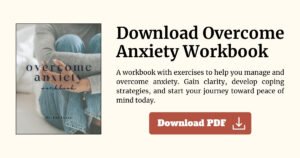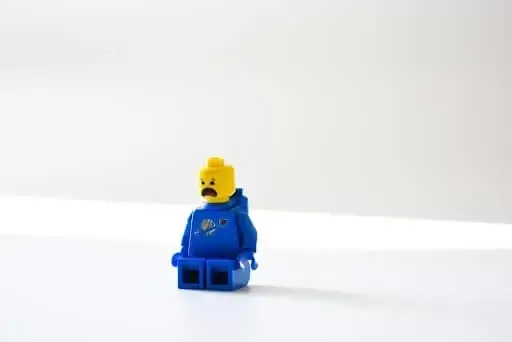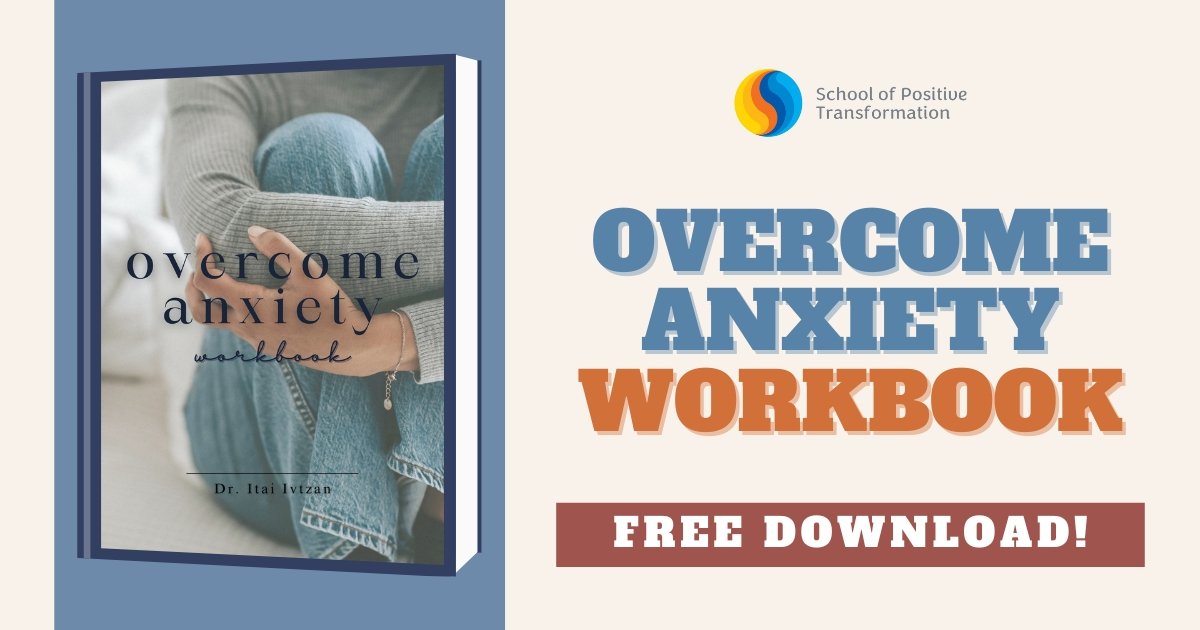Negative Bias
 Negative bias occurs even when adverse events and positive events are the same magnitude, meaning we feel negative events more intensely.
Negative bias occurs even when adverse events and positive events are the same magnitude, meaning we feel negative events more intensely.
“The bad stuff is easier to believe. You ever notice that?” says Julia Roberts’ character, Vivian, in Pretty Woman (1990). As it turns out, Roberts’ character, Vivian, was touching on an unfortunate psychological truth; the “bad stuff” is indeed easier to believe, and the reasons why may surprise you.
For starters, our proclivity for paying attention to negative rather than positive information is an evolutionary hand-me-down from our cave-dwelling ancestors. Back then, alertness to danger, AKA “the bad stuff,” was a matter of life and death. “We inherited the genes that predispose us to give special attention to those negative aspects of our environments that could be harmful to us,” explains psychologist and happiness researcher Timothy J. Bono, Ph.D., who teaches a course in the Science of Happiness at Washington University in St. Louis. In this way, dwelling on the “bad stuff” is similar to the sensation of pain–it’s our bodies working to keep us safe.
What is the negativity bias?
Negativity Bias: The difference between men and women
How can you overcome the negativity bias?
How To Overcome Negative Bias With Positive Psychology?
Moreover, negative emotions rouse the amygdala, the almond-shaped brain structure that psychologist Rick Hansen, Ph.D., founder of the WINCW (Wellspring Institute for Neuroscience and Contemplative Wisdom), calls “the alarm bell of your brain.” According to Dr. Hansen, the amygdala “uses about two-thirds of its neurons to look for the bad news. Once it sounds the alarm, negative events and experiences get quickly stored in memory, in contrast to positive events and experiences, which usually need to be held in awareness for a dozen or more seconds to transfer from short-term memory buffers to long-term storage.”
But before you continue you might like to consider our free worksheet on exploring “Overcome Anxiety”. Please download this worksheet here.
What is the negativity bias?
Adverse events and experiences imprint more quickly, but they also linger longer than positive ones. According to researcher Randy Larsen, Ph.D., This stickiness is known as positive-negative asymmetry or the negativity bias. In other words, for a multitude of reasons, including biology and chemistry, we’re more likely to register an insult or negative event than we are to take in a compliment or recall details of a happy event. The negativity bias can even cause you to dwell on something negative even if something positive is equally or more present. For example, you might spend all day with a friend and have a wonderful time, but if they make one small comment that perturbs you, you may end up remembering the day just for that comment–categorizing the experience as negative when the entire day was positive.
Another example, Dr. Bono explains, “Danny Kahneman (an economist who won the 2002 Nobel prize for his work) has designed studies in which participants are asked to imagine either losing $50 or gaining $50. Even though the amount is the same, the magnitude of the emotional response is significantly larger for those imagining what it would be like to lose the money. In other words, the negativity of losing something is far greater than the goodness of gaining something…even when the “something” that has been lost or gained is objectively equivalent.”
Negativity Bias: The difference between men and women
Interestingly, there is a difference between how men and women register negative comments. Dr. Bono explains, “The negative-positive asymmetry effect holds for both men and women. The difference, however, is typically found in how the emotions become manifest. Women are much more likely to internalize them (in the form of sadness or depression, for example), and men are more likely to externalize (as with outward anger).”
 How can you overcome the negativity bias?
How can you overcome the negativity bias?
But there is good news. Despite the evolutionary hand we’ve been dealt, the degree to which we’re able to override our “default” setting and avoid falling into an abyss of self-recrimination, insecurity, sadness, anger, bitterness and other negative emotions depends on a slew of factors, including our upbringing, the input we’ve received from those around us whose opinions we value, and how we interpret what we’ve been told. “The single most important underlying factor is….how we talk to ourselves about our experiences,” notes Kenneth Yeager, PhD, director of STAR (Stress, Trauma, and Resilience) Program at The Ohio State University Wexner Medical Center. “If you challenge yourself…to be mindful of your daily activities, noticing what’s important [and what isn’t], you are more likely to have positive life experiences,” Dr. Yeager explains. Basically, you need to put effort into truly valuing all the good and positive aspects of your life so that you are not overcome by the negative. Even if you are facing a multitude of objectively negative situations, you can try to appreciate the positive aspects of your life, regardless of how small they may be. Other ways to counterbalance our proclivity towards negativity? Grant Brenner, MD, Adjunct Assistant Clinical Professor of Psychiatry, Mt. Sinai Beth Israel Medical Center (New York), advises:
- Be poised to gently recognize what is happening when negative patterns start to get activated and practice doing something each and every time—even something very small—to break the pattern. If you are inclined to overanalyze parts of conversations that you assume are negative, figure out a hobby or habit that keeps you from overanalyzing, like reading, going for a run, cleaning your house up, or creating a music playlist that makes you feel happy.
- Notice your negative self-dialogue and substitute positive approaches. “You idiot!” becomes, “I wish I had made a different choice, but I will remember how I wish I had acted and apply it to future situations.”
- Another tactic that might feel strange at first, but can help to approach your mean inner voice with kindness, is talking to yourself as you would a friend. When negative thoughts intrude, ask yourself, “Are you ok? What’s wrong? Why are you so angry? Are you feeling hurt?” The idea is to interrupt yourself whenever you start to trash talk yourself good-naturedly. It’s kind of like The Golden Rule: “Do unto others as you would have them do unto you,” except it involves treating yourself with the same kindness and compassion that you treat the people you love.
- Perhaps most important, notes Brenner, is to “cultivate a gentle, curious and patient attitude with yourself. Learn to celebrate small victories [over negativity and self-recrimination] while understanding that you may have days of back-sliding. It’s all a natural part of the learning and growth process.”
It’s important to remember how much agency you have in letting bad comments stick with you or not. Eleanor Roosevelt famously said: “No one can make you feel inferior without your consent.” Refuse to consent to make yourself feel inferior.
How To Overcome Negative Bias With Positive Psychology?
Psychology says that brains are designed to react more vehemently to negative stimuli than positive ones, and that’s the primary reason behind the complications associated with a negativity bias. Brain reactions are measured in Event-Related Brain Potential, or ERP, and trial findings suggest that ERP numbers are higher when negative images are presented as compared to occasions when positive images are presented. This triggers the often discussed concept; human beings are hard-wired for negativity. The results of the “negative bias” are often unpleasant and sometimes disastrous. Seeing the world through a negative filter causes the mind-set to become predisposed towards gloominess, leading to depression. When carried to the extreme, morbid thoughts creep in, and the person may turn suicidal. This is exactly why negative bias should be kept in control, and in some cases, professional psychiatric help should be sought.
Cognitive Restructuring Sessions
Our psychology clinic in San Diego specializes in CBT (cognitive behavioral therapy) besides other psychological therapy processes. CBT is an established process of restructuring thought patterns through trained response modifications. Scientific research has established that patients who went through practicing cognitive restructuring sessions had a 70% higher chance of eliminating/ reducing negative bias. At the simplest level, cognitive restructuring can also be practiced individually. Whenever you hear yourself processing some negative thoughts or taking a negative view of the situation, motivate yourself by reframing the stimulus or experience that shaped those thoughts. Learn to break up each episode into the ABC theory i.e., the Antecedent-Behaviour-Consequence theory. Also, learn to recognize that behavior or B shapes consequences ©, which creates new Antecedents (A). B is the most powerful factor here, and if that can be controlled, neither A nor fear of untoward C can affect you. At our clinic, we hold one-on-one counseling sessions for clients struggling with negative ABC behavioral circles through various scientific techniques. We also give out CBT worksheets to help create a more practical view of a situation and remove negative bias. It is recommended that you opt for professional CBT sessions if you cannot conquer negative bias on an individual level.
 Migrate to Defusion from Cognitive Fusion The Defusion technique is an exercise of mindfulness used to look at thoughts as mere thoughts rather than a life-changing phenomenon. Defusion teaches people plagued by negative bias to take some steps back and categorize thoughts as logical, emotional, or sporadic. Labeling thoughts is an analytics-driven process, and it can help weed out unnecessary emotional responses like anger, jealousy, and resentment. Defusion is not easy to achieve initially but once practiced. It helps develop iron control over emotions. Instead of thinking, “I am not intelligent,” defusion teaches the person to think “a thought that I am not intelligent is entering my mind.” By putting objective distance between your persona and your thoughts, you will gain more mastery over them. Identify the Silver Linings The Silver Linings intervention is useful in a group as well as one on one settings. The aim is to modify the outlook towards negative experiences and events by practicing a balanced approach and a positive perspective. The silver lining translates into attempting to identify a positive angle out of every negative situation. This is a kind of mindfully curated, optimistic approach, and in the long run, people practicing the silver lining approach can conquer negative bias most effectively. The silver linings approach guides people through many steps that build up optimism, resilience, cooperativeness, adjustment, and tenacity. All of these are qualities needed for a more balanced life.
Migrate to Defusion from Cognitive Fusion The Defusion technique is an exercise of mindfulness used to look at thoughts as mere thoughts rather than a life-changing phenomenon. Defusion teaches people plagued by negative bias to take some steps back and categorize thoughts as logical, emotional, or sporadic. Labeling thoughts is an analytics-driven process, and it can help weed out unnecessary emotional responses like anger, jealousy, and resentment. Defusion is not easy to achieve initially but once practiced. It helps develop iron control over emotions. Instead of thinking, “I am not intelligent,” defusion teaches the person to think “a thought that I am not intelligent is entering my mind.” By putting objective distance between your persona and your thoughts, you will gain more mastery over them. Identify the Silver Linings The Silver Linings intervention is useful in a group as well as one on one settings. The aim is to modify the outlook towards negative experiences and events by practicing a balanced approach and a positive perspective. The silver lining translates into attempting to identify a positive angle out of every negative situation. This is a kind of mindfully curated, optimistic approach, and in the long run, people practicing the silver lining approach can conquer negative bias most effectively. The silver linings approach guides people through many steps that build up optimism, resilience, cooperativeness, adjustment, and tenacity. All of these are qualities needed for a more balanced life.
Move to a more “Aware “version of yourself
Self-awareness is the key to conquer any mental weakness, and that includes negative bias. Develop a habit of checking up on yourself throughout the whole day, and that is how you can better identify your strengths and weaknesses. You can also identify positive and negative thought patterns and figure out how these patterns positively/ negatively affect your life. You can identify negative bias in actual action after you have reached a certain level of self-awareness. And once you learn to do this, replacing negative thoughts with positive ones becomes easy. Experts suggest that practicing Yoga and Meditation are good ways to inculcate mindfulness and move forward on the path of self-awareness. It is very easy to fall prey to a destructive circle of negative thoughts in these stress-ridden pandemic times. Still, the above-mentioned tools will definitely help you identify and conquer the phenomenon of the negative bias! The negative bias can have a powerful impact on your behavior, but being aware of it means that you can take steps to adopt a more positive outlook on life. Ruminating on the negative can take a serious toll, so taking steps to combat this bias can play a role in boosting your mental well-being.
Ready to shift your mindset and take control of your thoughts? Download our Overcome Anxiety Workbook for free here and start your journey towards a more positive and empowered life today!






